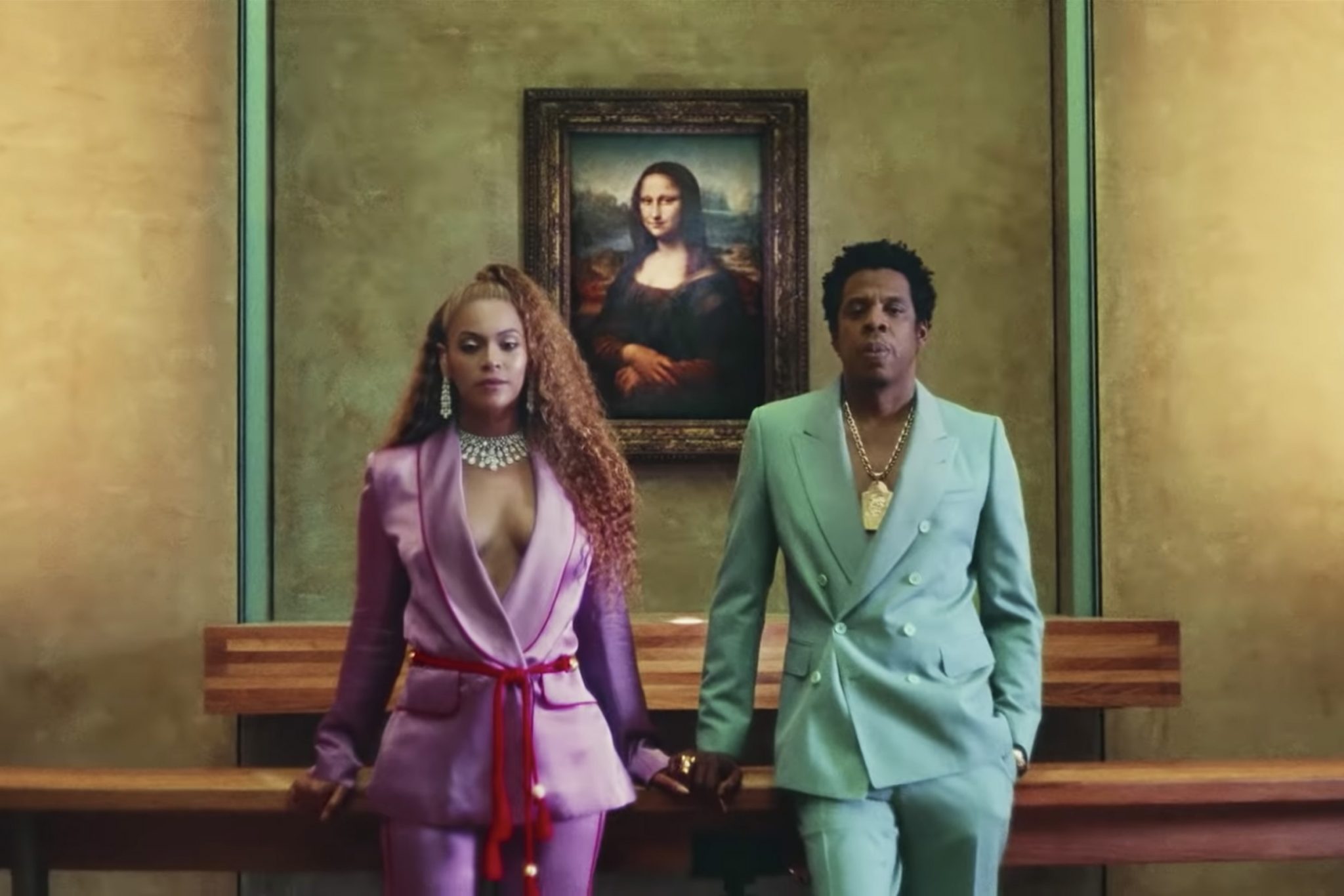“APESHIT” is an award-worthy music video and the Carters deserve recognition for it

The 2019 Grammy Awards aired on Feb. 10 and awarded Best Music Video to Childish Gambino’s “This Is America.”
While “This Is America” deserved to win for its modern-day portrayal of racism in America, I believe that in a more discretized manner The Carters video, “APESHIT,” brought the racial tension within the Louvre, society and history to light.
However, while the Louvre has a collection of the most prized artwork, it also displays the white hierarchy that exists throughout art history.
The video starts with the camera looking upon the Louvre’s dramatic ceilings and flashing to glimpses of caucasian figures amongst various paintings.
Once the song begins, the camera slowly focuses on the Salle des Etats Gallery, where Beyoncé and Jay-Z stand in front of Leonardo De Vinci’s Mona Lisa. In a room full of European culture, Jay-Z and Beyoncé stand as the only representation of African ethnicity.
Additionally, the Carters challenge the most popular painting in the world as they make their own space in the gallery that shines a light on the black community.
In one of the song’s most repetitive scenes, Beyoncé lounges in front of The Winged Victory of Samothrace. When the sculpture was founded on the Greek island of Samothrace in 1863, archeologists believed that its original sculptor intended it to be placed on a cliff for ships to see it from afar.
It was therefore symbolically placed at the top of the Louvres Daru staircase, to be greeted by eager tourists. Beyoncé had a similar idea as she gracefully placed herself in front of the sculpture, so all attention is on her instead of the white marble angel.
In front of The Coronation of Napoleon by Jacques-Louis David, several females of various brown complexions line up beside Beyoncé. The singer dances directly under the spot where Napoleon, one of the most persistent colonizers in all of history, is being coronated.
Together, Beyoncé and Jay-Z illustrate a powerful example of the progress that the black community has made since the days of slavery.
As Beyoncé is also referred to as ‘Queen B,’ this image reflects her own success as an artist and icon amongst women, especially those of colour.
While other dancers wear nude coloured body suits, Beyoncé is dressed in England’s high fashion Burberry brand. Beyoncé’s choice to have simple nude bodysuits around her own Burberry ensemble suggests that the singer is not interested in keeping up with the Louvre’s regal aesthetic, but instead, she is likely trying to draw attention to the beauty in different skin tones.
Throughout most of “APESHIT,” Beyoncé and Jay-Z stand out amongst the artworks. Yet in the Department of Egyptian Antiquities, where the couple stands in front of the Great Sphinx of Tanks, they embrace Egypt’s role as one of the primary hosts of Africa’s art history.
Jay-Z raps the majority of his verses in front of the Raft of the Medusa. Theodore Géricault’s contemporary painting displays the real events that occurred after the Medusa ship sank in 1816, leaving 146 passengers on a raft due to a shortage of lifeboats.
The painting shocked the Paris Salon with its harsh subject matter of 14 survivors, some dead, some resorting to cannibalism, others looking for help on the horizon. Amongst the 14 people stand two African men in contrast beside the lighter figures.
One black man’s head peeks out from behind the shadows while the other man is lifted up to wave a flag towards rescuers.
The black man in the shadows emphasizes the neglect of black individuals in Western art and society while the African man holding the flag that would alert a boat in the distance highlights the artist’s views towards the abolition of slavery.
The Raft of the Medusa hangs in the Louvre as one of the only paintings that attempted to push Africans out of the background of art history and address the pressing issue of slavery.
Therefore, Jay-Z rapping in front of the historical significant painting acknowledged its significance in art and early civil rights movements.
When the camera eventually returns back to the Mona Lisa, a black man sits in a chair while a black woman cuts his hair.
This intimate scene displays a popular occupation amongst black communities. Having such a casual scene in front of the Mona Lisa enhances the popular cultural practices that are representative of the black community.
Throughout the video, Beyoncé is the main attraction. Her success has granted her the privilege to rent out the Louvre and to stand out amongst some of the world’s most magnificent art pieces.
Yet, amongst the beautiful paintings and sculptures, Beyoncé constantly reminds viewers of the underrepresentation of black people in Western art, society, and culture.
Together, Beyoncé and Jay-Z illustrate a powerful example of the progress that the black community has made since the days of slavery.
While “This is America” was deserving of the Grammy award for Best Music Video, I believe that The Carters “APESHIT” would have been just as worthy due to its detailed display of racism in Western art history.


